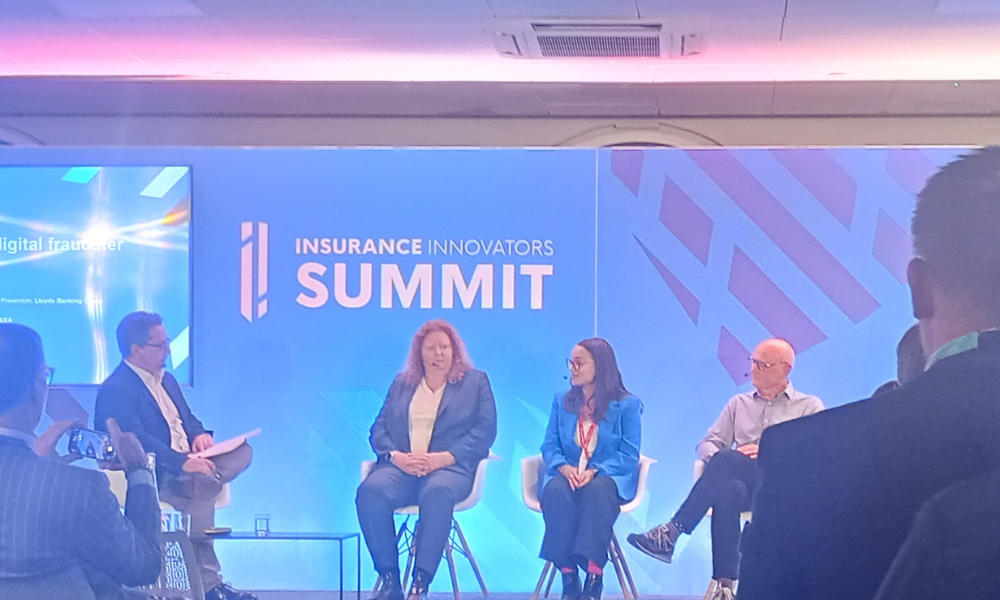

With a new insurance fraud charter announced at the latest Joint Fraud Taskforce meeting, insurance companies are coming together to crack down on fraudsters manipulating the UK insurance market. But what’s the extent of the issue facing the market – and what are the challenges keeping even fraud prevention and mitigation specialists awake at night?
With 84,400 fraudulent claims, worth £1.1 billion, detected by the ABI in 2023 alone – a 16% increase compared to 2022 – the impact of fraud on the UK economy is becoming increasingly clear. Recent research from Gov.UK emphasised the significant challenge being presented by ‘crash for cash’ scams. Meanwhile, the Insurance Fraud Bureau revealed it is currently investigating over 6,000 suspected fraudulent motor insurance claims, which could be linked to these scams.
At the recent Insurance Innovators Summit in London, specialists from across the insurance market came together to share their insights into the changing face of fraud and how to stop ‘digital fraudsters’. With over 20 years of hands-on experience in counter-fraud activity, Adele Sumner, head of counter fraud & financial crime at RSA Group, highlighted that technology is at the root of what keeps her up at night.
She noted that recent months and years have brought so many exciting use cases for new technologies, including large language models (LLMs) and other forms of generative AI in reading documents, summarising documents and tracking what fraudsters are up to. “But actually now, what I’m starting to realise is that, with fraud investigations in particular, a lot of the evidence and information is still inside their brains.”
When you read an investigation report, you learn every detail of the case and you can be thousands of words into that report before you come to where the fraud occurred, she said. What concerns her is the scope for misinformation when you’re dealing with the unknown information and detail in the human brain that wasn’t put down on paper. And if LLMs are trained to go looking for fraud, using only the available information, they aren’t likely to have the desired result.

With that in mind, Sumner highlighted the power of a ‘back to basics’ approach to fighting fraud. She cited a recent example where she used a mobile phone to chat through a case, and enjoyed the freedom and utility it afforded her. “I could be walking and talking, I didn’t have to be sat in a chair,” she said. “I didn’t have to be thinking about whether I had 15 minutes or a half-hour slot… In a quick two-minute phone call, we got through the conversation and had all the right information.
“So, how is all this generative AI extracting information from documents, using Teams meetings and all the other things helping if fraudsters are doing what they’ve always done – going back to burner phones, and old-fashioned [conversations]? It’s questions like that which keep me awake at night – how to keep up when fraudsters are going back to using old tech because we’re too busy chasing new tech.”
Adding his perspective, Ben Fletcher, director of financial crime at LV=, underscored the tenacity of the insurance fraudster. The industry has done a lot over the last number of years, both to tackle fraud and to help drive down the cost of insurance to policyholders, he said, but a variety of factors have meant that fraud is continually evolving against this backdrop. The old spectre of ‘crash for cash’ schemes has changed and moved to a different model but the fraud hasn’t gone away – and insurers are still seeing resulting claims.
“We talk a lot about the line between organised and opportunistic fraud, but, in reality, those lines are increasingly blurred,” he said. “Because you can have an organised group who are coercing people who are innocent and opportunistic in nature, so the lines become blurred. But the tenacity of the fraudster and the fact that fraud will continue evolving and we can’t ever think about it as being done - I think that’s point one.
“And the second point is that we do have a vast amount of information, data and technology… but for me, the challenge is the people we’ve got within our own organisations. They’re skilled people, they know what they’re doing and they’re naturally inquisitive. But most of us only have the ability to retain so many different variables and think about so many things so, you’ve got a finite amount of capacity in the day.”
The challenge is that if you’ve got a machine learning model or a predictive model that’s throwing 20 fraud cases at a member of your fraud team who only has the capacity for 10, they’re likely to choose the cases most likely to get a quick win. As a result, he said, they won’t necessarily always choose them in an entirely neutral and non-biased way. The concern for Fletcher is how insurers can blend new technologies with their traditional structures and models in a way which empowers their people to trust the technology and their own judgment.
“So, I’m also really concerned about the same point Adele made, albeit from a slightly different angle,” he said. “If you don’t address [the above] in the machine learning model, then when you retain the model, it’s just saying ‘fraud looks like this’ because that’s what has been validated. So, you’ll keep finding what you think you’re looking for and you won’t necessarily find the new stuff. So I’m concerned about the tenacity of the fraudster and how we can find the stuff that looks different to what we’ve looked at before.”
